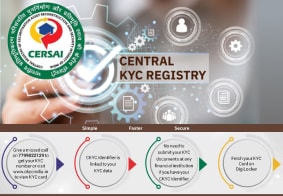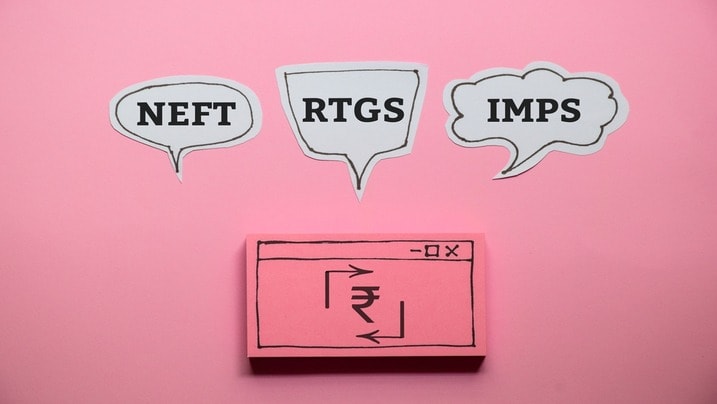CKYC Registry
-
Customer Service Contact us Service request Locate a branch
Find all the help you need
Scan the QR, get our app, and find help on your fingertips

Help CenterSupport topics, Contact us, FAQs and more
-
Login
Are you ready for an upgrade?
Login to the new experience with best features and services
-
Login
Are you ready for an upgrade?
Login to the new experience with best features and services
- Accounts
-
Deposits
IDFC FIRST Bank Deposits
View all Deposits -
Loans
IDFC FIRST Bank Loans
View all Loans - Wealth & Insure
-
Payments
IDFC FIRST Bank Payments
View all Payments -
Cards
IDFC FIRST Bank Cards
View all Cards - Blogs
- Corporate Account
-
Cash Management Services
IDFC FIRST Bank Cash Management Services
View all Cash Management Services - Supply Chain Finance
-
Corporate Lending
IDFC FIRST Bank Lending
View all -
Treasury
IDFC FIRST Bank Treasury
See more details - NBFC Financing
Support topics, Contact us, FAQs and more
- IDFC FIRST Bank Accounts
-
Savings Account
-
Corporate Salary
Account -
Senior Citizens
Savings Account -
First Power
Account -
Current Account
-
NRI Savings
Account -
TASC Institutional
Account -
Savings Account
Interest Calculator
- IDFC FIRST Bank Deposits
-
Fixed Deposit
-
Recurring Deposit
-
NRI Fixed Deposit
-
Safe Deposit Locker
-
FD Calculator
-
RD Calculator
- IDFC FIRST Bank Loans
-
Personal Loan
-
Consumer Durable
Loan -
Home Loan
-
Business Loan
-
Professional Loan
-
Education Loan
-
New Car Loan
-
Pre-owned Car Loan
-
Two Wheeler Loan
-
Pre-owned Two
Wheeler Loan -
Commercial Vehicle
Loan -
Gold Loan
-
Loan Against Property
-
Loan Against Securities
-
Easy Buy EMI card
-
Personal Loan
EMI Calculator -
Education Loan
EMI Calculator -
Home Loan
EMI Calculator
- IDFC FIRST Bank Wealth & Insure
-
FIRST Select
-
FIRST Wealth
-
FIRST Private
-
Mutual Funds
-
Sovereign Gold Bond
-
Demat Account
-
Term Insurance
-
Life Insurance
-
Health Insurance
-
General Insurance
-
Bonds
-
Loan Against
Securities -
Portfolio Management
Service
- IDFC FIRST Bank Payments
-
FASTag
-
Credit Card
Bill Payments -
UPI
-
Funds Transfer
-
Forex Services
-
Pay Loan EMI
- IDFC FIRST Bank Cards
-
Ashva :
Metal Credit Card -
Mayura :
Metal Credit Card -
FIRST Millennia
Credit Card -
FIRST Classic
Credit Card -
FIRST Select
Credit Card -
FIRST Wealth
Credit Card -
FIRST WOW!
Credit Card -
Deals
-
Debit Cards
-
Co-branded Cards
-
Credit Card
EMI Calculator -
FIRST Corporate
Credit Card -
FIRST Purchase
Credit Card -
FIRST Business
Credit Card
- Premium Metal Credit Cards
-
AshvaLifestyle1% Forex₹2,999
-
MayuraLifestyleZero Forex₹5,999
-
FIRST PrivateInvite Only
- Best for travellers
-
MayuraZero ForexMetal₹5,999
-
Ashva1% ForexMetal₹2,999
-
FIRST WOW!Zero ForexTravelLifetime Free
-
FIRST SWYPTravel OffersEMI₹499
-
FIRST Select1.99% ForexLifestyleLifetime Free
-
FIRST Wealth1.5% ForexLifestyleLifetime Free
-
Club VistaraTravelLifestyle₹4,999
-
IndiGo IDFC FIRST Dual Credit CardTravelLifestyle₹4,999
- Max benefits, Free for life
-
FIRST Classic10X RewardsShoppingNever Expiring Rewards
-
FIRST Millennia10X RewardsShoppingNever Expiring Rewards
-
FIRST Select10X RewardsLifestyle1.99% Forex
-
FIRST Wealth10X RewardsLifestyle1.5% Forex
-
FIRST WOW!RewardsTravelZero Forex
-
LIC ClassicRewardsInsuranceShopping
-
LIC SelectRewardsInsuranceShopping
- Reward Multipliers
-
AshvaLifestyleMetal₹2,999
-
MayuraLifestyleZero Forex₹5,999
-
FIRST ClassicNever Expiring RewardsShoppingLifetime Free
-
FIRST MillenniaNever Expiring RewardsShoppingLifetime Free
-
FIRST SelectNever Expiring RewardsLifestyleLifetime Free
-
FIRST WealthNever Expiring RewardsLifestyleLifetime Free
- Rewards & Credit on UPI
-
FIRST Power+FuelUPI₹499
-
FIRST PowerFuelUPI₹199
-
FIRST EA₹NVirtual1% Cashback₹499
-
FIRST DigitalVirtualUPI₹199
-
IndiGo IDFC FIRST Dual Credit CardUPITravelDual cards
- Fuel and Savings
-
FIRST PowerRewardsUPI₹199
-
FIRST Power+RewardsUPI₹499
-
LIC ClassicRewardsInsuranceShopping
-
LIC SelectRewardsInsuranceShopping
- Express and Flaunt
-
AshvaMetal1% Forex₹2,999
-
MayuraMetalZero Forex₹5,999
-
FIRST SWYPEMIOfferMAX₹499
-
FIRST MillenniaRewardsShoppingLifetime Free
- FD Backed rewarding Credit Cards for all
-
FIRST EA₹NVirtualCashback₹499
-
FIRST WOW!Zero ForexTravelLifetime Free
-
CreditPro Balance TransferTransfer & SaveReduce InterestPay Smartly
- IDFC FIRST Bank NRI Forex Solutions
-
Send money to India-Wire transfer
-
Send money to India-Digitally
-
Send money abroad
-
Max Returns FD (INR)
- IDFC FIRST Bank MSME Accounts
-
Platinum Current
Account -
Gold
Current Account -
Silver Plus
Current Account -
Merchant Multiplier
Account -
Agri Multiplier
Account -
TASC Institutional
Account -
Dynamic Current
Account -
World business
Account -
First Startup
Current Account
- IDFC FIRST Bank Business Loans
-
Business Loan
-
Professional Loan
-
Loan Against Property
-
Business Loan for Women
-
Working Capital Loan
-
Construction Equipment Loan
-
Machinery Loan
-
Healthcare Equipment Loan
- IDFC FIRST Bank Business Solutions
-
Payment Solutions
-
Tax Payments
-
Doorstep Banking
-
Point of Sale (POS)
-
Escrow Accounts
-
NACH
-
Payment Gateway
-
UPI
-
Virtual Accounts
-
As per amendment in the Income Tax Rules, PAN or Aadhaar are to be mandatorily quoted for cash deposit or withdrawal aggregating to Rupees twenty lakhs or more in a FY. Please update your PAN or Aadhaar. Kindly reach out to the Bank’s contact center on 1800 10 888 or visit the nearest IDFC FIRST Bank branch for further queries.
-
-
Most Searched
Sorry!
We couldn’t find ‘’ in our website
Here is what you can do :
- Try checking the spelling and search
- Search from below suggestions instead
- Widen your search & try a more generic keyword
Suggested
Get a Credit Card
Enjoy Zero Charges on All Commonly Used Savings Account Services
Open Account Now
The talk of the digital rupee, digital currency, or CBDC brings many questions to one’s mind. Is it a currency like Bitcoin? Or is it a platform like UPI? Is it a type of fund transfer like NEFT or IMPS? Is it a wallet and so on? We demystify Central Bank Digital Currency or CBDC by comparing it with UPI, NEFT, IMPS, and Cryptocurrency.
What is a digital currency (CBDC)?
A Central Bank Digital Currency (CBDC) is a form of digital currency issued by a country's central bank such as the Reserve Bank of India. It operates as a government-backed digital representation of a nation's official currency, such as the INR, Pound Sterling, or the Euro.
Unlike cryptocurrencies like Bitcoin, CBDCs are centrally controlled and regulated by the government. They are designed to provide a secure and efficient medium of exchange in the digital realm, aiming to enhance financial inclusion and reduce reliance on physical cash.
CBDCs offer potential benefits such as increased transparency, reduced transaction costs, and enhanced monetary policy tools for central banks.
READ MORE
Types of digital currencies
There are various types of digital currencies, each with its unique characteristics such as:
1. Central Bank Digital Currency (CBDC):
Issued and regulated by a nation's central bank, CBDCs are digital representations of the official currency. They are considered the digital equivalent of physical cash and are backed by the government.
2. Cryptocurrencies:
These are decentralised digital currencies that use blockchain technology for security and transparency. Bitcoin, Ethereum, and Litecoin are well-known examples. Cryptocurrencies operate independently of central authorities.
3. Utility Tokens:
These digital assets grant access to a specific blockchain or platform's services or products. Ethereum's Ether (ETH) is a prime example, used to pay for smart contract execution.
4. Security Tokens:
Represent real-world assets such as stocks, bonds, or real estate on a blockchain. They provide ownership and, in some cases, dividends or voting rights.
5. Non-Fungible Tokens (NFTs):
These unique digital assets represent ownership of digital or physical items, often used in art, collectables, and gaming.
6. Centralised Digital Currencies:
Created and controlled by private companies or organisations, examples include Facebook's Diem (formerly Libra) and JPMorgan's JPM Coin.
What is cryptocurrency?
Cryptocurrency is a type of digital or virtual currency that relies on cryptography for security. Unlike traditional currencies issued by governments (e.g., the Indian Rupee), cryptocurrencies operate on decentralised technology called blockchain, which is a distributed ledger that records all transactions across a network of computers. Prominent examples include Bitcoin and Ethereum.
Cryptocurrencies enable peer-to-peer transactions without the need for intermediaries like banks. They offer decentralisation, immutability, and transparency, making fraud and manipulation more challenging. Users store their cryptocurrency holdings in digital wallets, secured by private keys.
One key feature of cryptocurrencies is their limited supply, often defined by a predetermined algorithm. This scarcity can lead to speculative investments. Additionally, cryptocurrencies have diverse use cases, including online purchases, remittances, and as a store of value.
| Difference | CBDC e-Rupee | UPI | NEFT | IMPS | Cryptocurrency |
| Status | Central Bank Digital Currency is a legal tender and is the digital avatar of the country’s fiat currency. | Unified Payments Interface facilitates real-time digital payment options through an inter-bank interface on peer-to-peer and peer-to-merchant transactions. | National Electronic Funds Transfer is used by bank customers to transfer funds to other NEFT-enabled bank accounts on a one-to-one basis. | Immediate Payments Service offers inter-bank electronic transfer of money. It can be done 24X7, even on holidays, and through phone as well as net banking | It is an umbrella term for various digital currencies that are used as a medium of exchange through the computer network. |
| Purpose | It is introduced as a digital alternative to the national currency as well as a legal alternative by RBI to cryptocurrency. | Its purpose is to act as an interface for payments. | It offers online fund transfers between bank accounts. | Like NEFT, it too offers online fund transfers between bank accounts. | To create an alternate digital currency. People can make and receive private and confirmed transactions, in real-time. |
| Types | CBDC is being classified under wholesale and retail categories. | There are no types, but different participants in UPIs. This includes bank account holders, merchants, NPCI, payer and payee PSPs, remitter, and beneficiary banks. | NEFT itself is a type of fund transfer. However, there are no further types of NEFT. | Like NEFT, IMPS is another type of fund transfer. IMPS can be made using a bank account and IFSC, using ATMs, SMS banking, and using mobile numbers, and MMID. | There are many types or kinds of cryptocurrency. Based on market capitalisation, the prominent ones include Bitcoin, Ethereum, Tether, USD Coin, BNB, XRP, Cardano, Polygon, Polkadot, and Dai. |
What are UPI, NEFT, and IMPS?
Leveraging the digital advancement in the banking sector, financial institutions offer online fund transfer methods through UPI, NEFT, and IMPS. Unlike cryptocurrencies, these online transactions include banks as an integral part of the money transfer process.
1. UPI (Unified Payments Interface):
UPI is a real-time payment system widely used in India. It allows individuals to instantly transfer funds between bank accounts via a smartphone app or internet banking. Users link their bank accounts to a UPI ID, making transactions convenient and secure. UPI has revolutionized digital payments, enabling various services like bill payments, online shopping, and peer-to-peer transfers.
2. NEFT (National Electronic Funds Transfer):
NEFT is an electronic fund transfer system in India managed by the Reserve Bank of India (RBI). It operates in batches and is typically used for interbank transactions. NEFT transactions have specific time slots, making them less immediate compared to UPI. It is suitable for non-urgent, large-value transfers.
3. IMPS (Immediate Payment Service):
IMPS is another electronic fund transfer system in India, offering real-time interbank transactions 24/7. It's known for its speed and convenience, making it suitable for instant payments, including person-to-person transfers, bill payments, and online shopping.
These systems have significantly contributed to India's digital payment ecosystem, offering options for different transaction needs, from quick and small payments through UPI to larger, less time-sensitive transactions via NEFT and instant transfers with IMPS.
To sum up
CBDC is the legal and government-recognised alternative to fiat currency that serves a lot of purposes. Unlike cryptocurrency, it is free from speculation as its value is backed by the national currency. It is also more than an interface or fund transfer mode but is expected to improve digital payments further.
Disclaimer
The contents of this article/infographic/picture/video are meant solely for information purposes. The contents are generic in nature and for informational purposes only. It is not a substitute for specific advice in your own circumstances. The information is subject to updation, completion, revision, verification and amendment and the same may change materially. The information is not intended for distribution or use by any person in any jurisdiction where such distribution or use would be contrary to law or regulation or would subject IDFC FIRST Bank or its affiliates to any licensing or registration requirements. IDFC FIRST Bank shall not be responsible for any direct/indirect loss or liability incurred by the reader for taking any financial decisions based on the contents and information mentioned. Please consult your financial advisor before making any financial decision.
The features, benefits and offers mentioned in the article are applicable as on the day of publication of this blog and is subject to change without notice. The contents herein are also subject to other product specific terms and conditions and any third party terms and conditions, as applicable. Please refer our website www.idfcfirstbank.com for latest updates.























